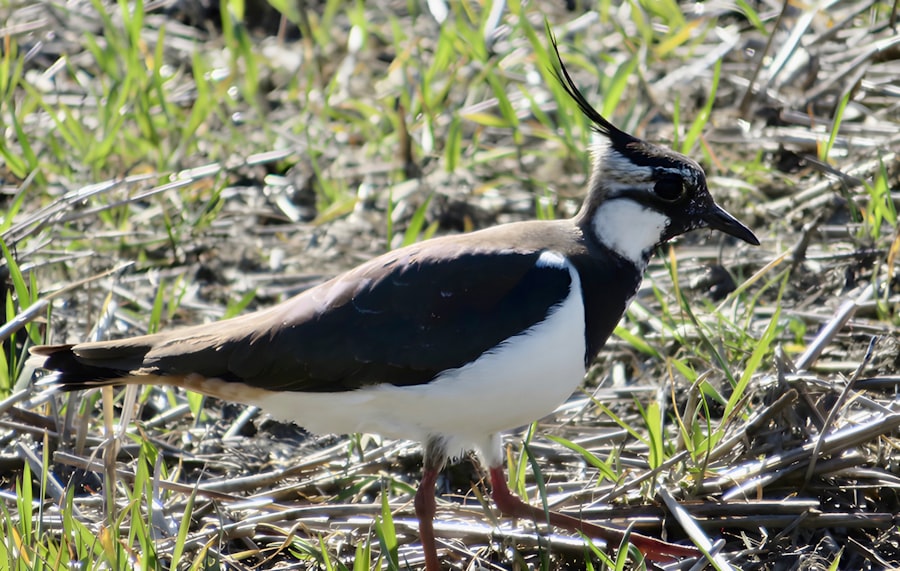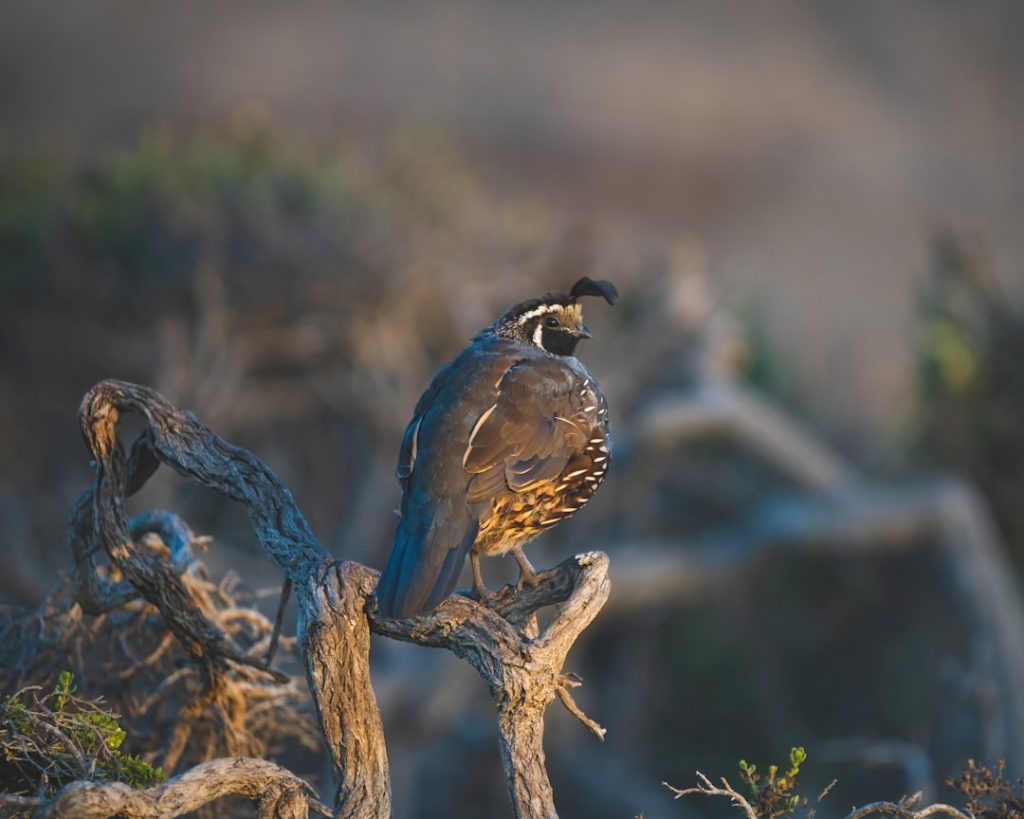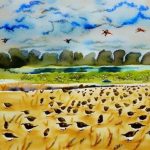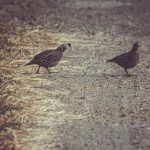Breeding bobwhite quail can be a rewarding and profitable venture for those interested in game bird production. Bobwhite quail are known for their hardiness, adaptability, and fast growth, making them an ideal choice for breeding. Understanding the breeding process is crucial for success in this endeavor. Bobwhite quail reach sexual maturity at around 16 weeks of age, and the breeding season typically begins in late spring and continues through the summer months. During this time, male quail will begin to court the females by puffing up their feathers, bobbing their heads, and emitting a distinctive call. Once a pair has formed, they will engage in mating behavior, with the female laying eggs shortly after. It’s important to understand the natural breeding behaviors of bobwhite quail in order to create a suitable environment for successful breeding.
In addition to understanding the breeding behaviors of bobwhite quail, it’s important to be aware of the ideal breeding conditions for these birds. Bobwhite quail thrive in open grasslands and brushy areas, so providing a habitat that mimics their natural environment is essential for successful breeding. This includes ample space for the birds to roam and forage, as well as suitable nesting sites for the females to lay their eggs. By understanding the natural breeding behaviors and habitat preferences of bobwhite quail, breeders can create an environment that promotes successful breeding and healthy offspring.
Table of Contents
- 1 Selecting the Right Breeding Pair
- 2 Housing and Care for Breeding Quail
- 3 Proper Nutrition for Breeding Quail
- 4 Monitoring Breeding and Egg Production
- 5 Health and Disease Management
- 6 Marketing and Selling Breeding Pairs
- 7 FAQs
- 7.1 What is a breeding pair of bobwhite quail?
- 7.2 What are the benefits of purchasing a breeding pair of bobwhite quail?
- 7.3 How can I find breeding pairs of bobwhite quail for sale?
- 7.4 What should I consider before purchasing a breeding pair of bobwhite quail?
- 7.5 Are there any legal considerations when purchasing breeding pairs of bobwhite quail?
Key Takeaways
- Bobwhite quail breeding requires understanding of their natural mating behaviors and reproductive cycles
- Select breeding pairs based on health, temperament, and genetic diversity to ensure strong offspring
- Provide adequate housing with nesting areas and proper care to minimize stress and maximize breeding success
- Offer a balanced diet with high protein and essential nutrients to support breeding and egg production
- Regularly monitor breeding pairs for signs of health issues and track egg production for optimal breeding outcomes
- Implement disease prevention measures and seek veterinary care when necessary to maintain breeding pair health
- Consider marketing breeding pairs to other quail enthusiasts or selling offspring to sustain breeding efforts
Selecting the Right Breeding Pair
Selecting the right breeding pair is crucial for successful bobwhite quail breeding. When choosing a breeding pair, it’s important to consider factors such as health, temperament, and genetic diversity. Healthy birds are more likely to produce healthy offspring, so it’s important to select breeding stock that is free from any signs of illness or disease. Additionally, choosing birds with a calm and docile temperament can help reduce stress and aggression during the breeding process. Genetic diversity is also an important consideration when selecting breeding pairs, as inbreeding can lead to genetic abnormalities and health issues in offspring. By choosing birds from different genetic lines, breeders can help ensure the overall health and vitality of their breeding stock.
It’s also important to consider the age and reproductive history of potential breeding pairs. Younger birds may not have reached full maturity and may not be as successful at breeding, while older birds may have a decreased fertility rate. Additionally, knowing the reproductive history of potential breeding pairs can provide valuable insight into their breeding potential. Birds that have successfully bred in the past are more likely to produce healthy offspring. By carefully selecting breeding pairs based on health, temperament, genetic diversity, age, and reproductive history, breeders can increase their chances of successful bobwhite quail breeding.
Housing and Care for Breeding Quail
Proper housing and care are essential for successful bobwhite quail breeding. When housing breeding pairs, it’s important to provide a spacious and secure enclosure that allows the birds to exhibit natural behaviors such as foraging, dust bathing, and nesting. The enclosure should also provide protection from predators and the elements, with adequate ventilation and insulation to maintain a comfortable environment for the birds. Additionally, providing suitable nesting sites such as boxes or shelters can encourage successful egg laying and incubation.
In addition to housing, providing proper care for breeding quail is essential for their health and reproductive success. This includes a balanced diet that meets the nutritional needs of breeding birds, as well as access to clean water at all times. Regular monitoring of the birds’ health and behavior is also important, as it allows breeders to identify any potential issues early on and provide appropriate care. By providing suitable housing and attentive care, breeders can create an environment that promotes successful bobwhite quail breeding.
Proper Nutrition for Breeding Quail
Proper nutrition is essential for the health and reproductive success of breeding bobwhite quail. During the breeding season, female quail have increased nutritional requirements to support egg production, while male quail require additional nutrients to support their mating behaviors. A balanced diet that includes high-quality game bird feed, supplemented with grains, seeds, and greens, can help meet the nutritional needs of breeding quail. It’s important to provide access to a variety of foods that mimic their natural diet in order to ensure they receive all the essential nutrients they need.
In addition to a balanced diet, providing access to calcium supplements can be beneficial for female quail during the egg-laying process. Calcium is essential for strong eggshells and can help prevent issues such as egg binding and soft-shelled eggs. It’s important to monitor the birds’ food intake and adjust their diet as needed based on their reproductive status and overall health. By providing proper nutrition tailored to the specific needs of breeding quail, breeders can support their reproductive success and the health of their offspring.
Monitoring Breeding and Egg Production
Monitoring breeding and egg production is essential for successful bobwhite quail breeding. Regular observation of the birds’ behavior can provide valuable insight into their reproductive status and overall health. This includes observing mating behaviors, monitoring nest building and egg laying, and keeping track of clutch size and fertility rates. By closely monitoring these aspects of breeding and egg production, breeders can identify any issues early on and take appropriate action to support successful reproduction.
In addition to behavioral observation, keeping detailed records of egg production can help breeders track the reproductive performance of their breeding pairs over time. This includes recording the number of eggs laid, fertility rates, hatch rates, and any issues or abnormalities observed during incubation. By maintaining accurate records of breeding and egg production, breeders can identify trends and make informed decisions about their breeding program. Regular monitoring of breeding behavior and egg production is essential for successful bobwhite quail breeding.
Health and Disease Management

Maintaining the health of breeding quail is essential for successful reproduction and the overall success of a breeding program. Regular health checks should be conducted to monitor for signs of illness or disease, including physical examinations and observation of behavior. It’s important to be familiar with common diseases that affect bobwhite quail, such as coccidiosis, respiratory infections, and parasites, in order to recognize symptoms early on and provide appropriate treatment.
In addition to regular health checks, implementing biosecurity measures can help prevent the spread of disease within a breeding facility. This includes quarantining new birds before introducing them to existing stock, maintaining clean and sanitary living conditions, and preventing contact with wild birds or other potential sources of disease transmission. By implementing biosecurity measures and providing regular health checks, breeders can help ensure the overall health and well-being of their breeding quail.
Marketing and Selling Breeding Pairs
Once successful breeding has occurred, breeders may choose to sell their breeding pairs to other enthusiasts or game bird producers. Marketing breeding pairs requires careful consideration of factors such as genetic lineage, reproductive history, and overall health. Providing potential buyers with detailed information about the birds’ background, including their genetic lineage and reproductive performance, can help demonstrate their value as breeding stock.
In addition to providing information about the birds themselves, offering support and guidance to buyers can help ensure the success of the breeding pairs in their new homes. This may include sharing knowledge about proper housing, care, nutrition, and breeding practices with new owners. By providing valuable information and support to buyers, breeders can build a positive reputation within the industry and increase the likelihood of repeat business.
In conclusion, successful bobwhite quail breeding requires a thorough understanding of their natural behaviors, careful selection of breeding pairs, proper housing and care, balanced nutrition tailored to their reproductive needs, regular monitoring of breeding behavior and egg production, proactive health management practices, and strategic marketing efforts when selling breeding pairs. By following these guidelines, breeders can increase their chances of success in this rewarding endeavor while contributing to the conservation of this iconic game bird species.
If you’re considering breeding pair bobwhite quail for sale, you may also be interested in learning about the ideal number of chickens for a family of four. Poultry Wizard has a helpful article on this topic, which discusses the practical aspects of keeping chickens for a small household. You can read more about it here.
FAQs
What is a breeding pair of bobwhite quail?
A breeding pair of bobwhite quail consists of a male and a female quail that are selected for the purpose of producing offspring. These quail are chosen based on their health, genetics, and other desirable traits to ensure the production of strong and healthy chicks.
What are the benefits of purchasing a breeding pair of bobwhite quail?
Purchasing a breeding pair of bobwhite quail allows individuals to start their own quail breeding program. This can be beneficial for those interested in raising quail for meat, eggs, or hunting purposes. Additionally, breeding pairs can be selected for specific traits, such as size, color, or temperament, to meet the needs of the buyer.
How can I find breeding pairs of bobwhite quail for sale?
Breeding pairs of bobwhite quail can often be found for sale through local breeders, poultry or game bird associations, online classifieds, or agricultural supply stores. It is important to ensure that the seller is reputable and that the quail are healthy and well-cared for.
What should I consider before purchasing a breeding pair of bobwhite quail?
Before purchasing a breeding pair of bobwhite quail, it is important to consider the space and resources needed to properly care for and breed the quail. Additionally, buyers should research the specific needs and requirements of bobwhite quail to ensure they can provide a suitable environment for the birds.
Are there any legal considerations when purchasing breeding pairs of bobwhite quail?
In some areas, there may be regulations or permits required for the breeding and sale of bobwhite quail. It is important for buyers to familiarize themselves with any local or state laws regarding the ownership and breeding of quail to ensure compliance with regulations.
Meet Walter, the feathered-friend fanatic of Florida! Nestled in the sunshine state, Walter struts through life with his feathered companions, clucking his way to happiness. With a coop that’s fancier than a five-star hotel, he’s the Don Juan of the chicken world. When he’s not teaching his hens to do the cha-cha, you’ll find him in a heated debate with his prized rooster, Sir Clucks-a-Lot. Walter’s poultry passion is no yolk; he’s the sunny-side-up guy you never knew you needed in your flock of friends!







